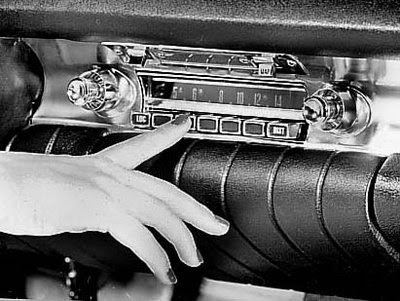Media futurist Seth Godin is at it again, announcing “An End to Radio.”
His latest take on broadcasting is that “just as newspapers fell off a cliff, radio is about to follow,” and that the near limitless choice of podcasts will replace it.
If Seth is right, and terrestrial radio suffers a fate similar to printed newspapers, it’s going to hurt.
Print ad revenues are now the lowest they’ve been since 1950. Revenues are down more than 50% in just the past five years.
Seth Godin isn’t the only one making news with thought provoking predictions about the future of the radio industry.
During a webinar hosted by Borrell Associates, Gordon Borrell offered attendees a history lesson in media technology disruption, followed by predictions for how media may look in ten years.
50% of stations will disappear
His most jarring prediction was that “half of AM/FM terrestrial stations will disappear by 2024,” their demise driven by “car-dashboard options. Only those with strongest and most valuable audiences will remain. Smartphones become radio.”
Before we dismiss these predictions as a mere peering into the fog, think back over the last ten years to the technologies not available in 2004.
The first iPhone was released on June 29, 2007. The first smartphone running Android was released on October 22, 2008.
In just seven years, Apple has sold more than half a billion iPhones. AND, in just six years, almost a billion total Android devices have been sold. 1.5 million devices are activated per day.
With the dizzying growth in smartphones, the growing popularity of streaming radio platforms, a podcasting renaissance, wide proliferation of broadband internet, and now the emergence of the digital dashboard, we can see the contours of a multi-platform future beginning to emerge from the fog that could eventually displace much of radio as we know it.
Better, faster, cheaper delivery
And we can see why many broadcasters, if they don’t act now, may soon begin to feel the pain that newspapers have felt.
Broadcast stations will not die because people don’t want the aural or visual experience, because they don’t want what’s ‘cast’, e.g. Christian media. In fact, the stats say more content is being consumed than ever before. Traditional broadcasting, as we know it, will continue to decline because there are better and lower cost ways of casting content than transmitters and towers.
With the advent of online video, audio, and podcasts (new podcasts from Christian publishers are popping up every week), content creators have found they can make and ship content cheaper than any broadcaster and get wider distribution (the whole internet) Then, in a few years it will be possible to get a seamless internet connection in the car and receive podcast programming.
That’s when the disruption will be apparent and inevitable. So what should traditional broadcasters do?
Next steps for Christian broadcasters
-
- Embrace the same type of technologies being used by churches and media ministries (online video and audio platforms). Choose the technology platform that’s right for you and begin operating it immediately.
-
- Aim to collaborate with content creators, not compete with them, when it comes using technology for the gospel. Established broadcasters have everything needed to attract, support and partner with individual producers – cash flow, business and media ministry expertise, marketing and promotional muscle, established audience base, marketplace presence.
-
- Create audio and video podcasts featuring your in-house personalities, for on-demand distribution through your new platform. Don’t fear cannibalization. Embrace it. Your audience isn’t loyal to your transmitter, they tune-in to hear and see your personalities. Go out into your region and find new voices. Your audience will thank you in the form of return visits to your platform and with financial support.
-
- Experiment with monetization of your content. Pre-roll, mid-roll, and post-roll audio and video ads. Paid audio endorsements for audio podcasts. Paid product placement in video ads. Integrated advertising and marketing. Digital content syndication fees.
-
- Offer digital training to your staff – program directors, engineers, sales, marketing. Have at least one digital specialist.
- If you don’t do anything else regarding digital technology today, do this one thing: Pray. Bathe your station’s future in prayer. Ask God for his wisdom and guidance. Pray. Pray. Pray.
Christian broadcasters (non-music stations, in particular) do not have to fall off the same cliff as newspapers.
It all comes down to intentional leadership. It’s time to focus and move aggressively forward with digital products before your station ends up on the sidelines.
